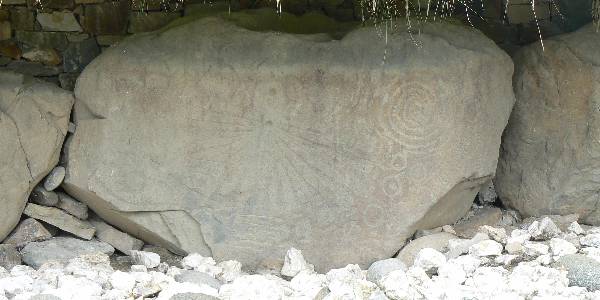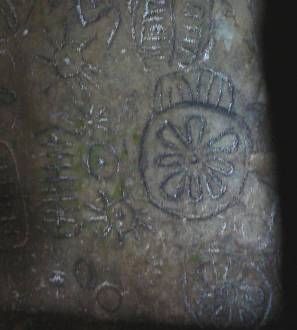Page content - Navigation bar - Next
page - Previous page - Index ABC (EN)
- Intro-EN
- NL ![]()

Intro-EN

Megalithic observatories
Probably lots of megalithic monuments had a astronomical meaning and used as calendar and observatory. What doesn't mean this was the only or most important purpose.
Stonehenge
There is written a lot of nonsense about Stonehenge, but many researchers are
convinced it was used as observatory for Sun and Moon.
The results of computed analyses, made by the American astronomer Dr. G.S.
Hawkins, showed Stonehenge can be used as a astronomic
measuring instrument...
Possibly Stonehenge was used to predict moon- and sun
eclipses.
The American researcher and author Paul D. Burley gives a relation between
the Station Stones and Orion.
Website Paul D. Burley: http://asabovesobelow-pauldburley.com/about/
Brú na Bóinne
Brú na Bóinne - Ireland (+- 3200 B.C.)
Around midwinter the morning sunlight enters
deep into the "chambered tomb" of Newgrange.
The light of midwinter sunset is caught by Dowth's the
southern entrance.
Several decorated kerbstones whit astronomical symbolism and world's oldest (known)
calendar stone surround the chambered tomb of Knowth.

Calendar stone, Knowth (Ireland)
Loughcrew
Loughcrew - Ireland (4000 B.C. to 2800 B.C.)
High up on the hills where are situated the 'Loughcrew Cairns" you can have
a spectacular view on a great area in Ireland. This is an ideal location to observe
stars and planets. Some of the tombs in Loughcrew still have an excellent calendar
function.
'Cairn-T' catches the light on spring- and autumn equinox.
(Around September 21 and March 21). On these days the sunbeams are penetrating
deep in to the dark chamber, where a stone decorated whit solar symbols
is enlightened.
A video showing the up-lighted stone during equinox:
---> www.knowth.com/loughcrew-equinox-video.htm

'Solar stone' Cairn-T Loughcrew - Irerland
Another 'tunnel' in Loughcrew, 'Cairn-L' catches the sunlight around November 8 and February 4. On these days a monolith in the chamber is enlightened. (This monolith is marked whit an arrow on following picture)

'Calendar monolith' inside 'Cairn-L', Loughcrew
Megaliths in Carnac (France)
Professor Thom considers the alignments in Carnac as a complex observatory.
His conclusions are difficult to understand and disputable. Sceptic people argument
many stones in the alignments are disappeared or removed.
The big standing stone at Locmariaquer was probably useful for moon-observation.
Other megalithic observatories:
A list including all megalithic observatories can be very long, including doubtful examples.
Some examples whit a almost sure astronomical alignment:
Bryn Celly Ddu - Wales
Callanish - Scotland
Castle Rigg Stone Circle - Cumbria, U.K.
Clava stone circles - Scotland
Cromeleque dos Almendres - Evora, Portugal
Gavrinis - Morbihan, Bretagne
Kercado - Carnac, Bretagne
Maes Howe - Orkneys, Schotland
Wéris - Belgium
For pictures and information (in Dutch) about sites above* : See in Belgian
part, "Megasites"
(* Except Callanish, Scotland)
'Back to top' - Geometry (= Next page)